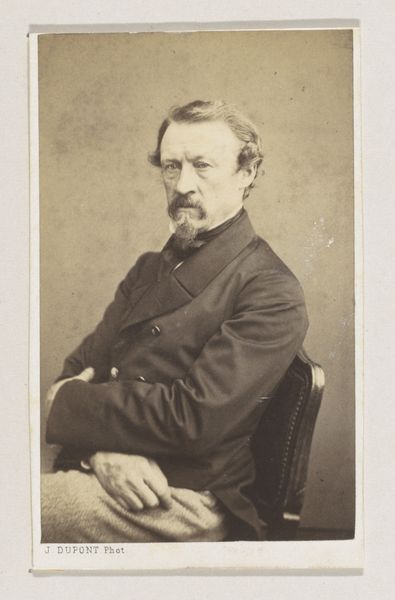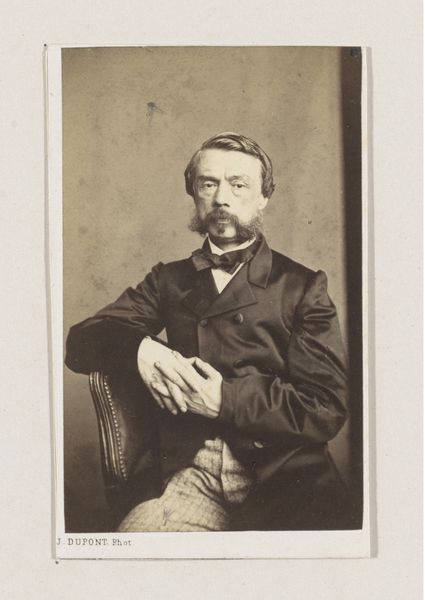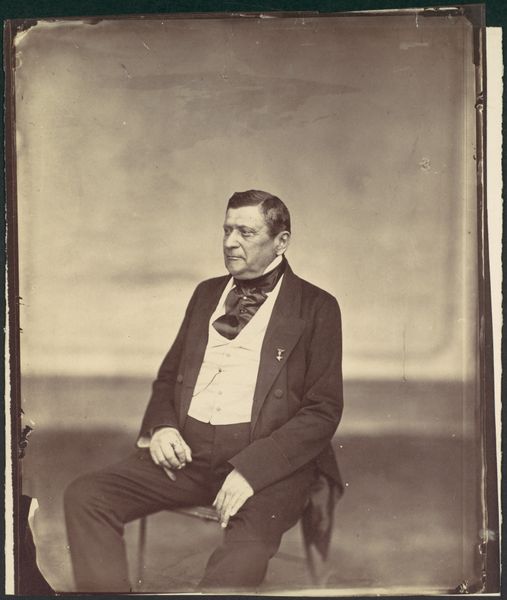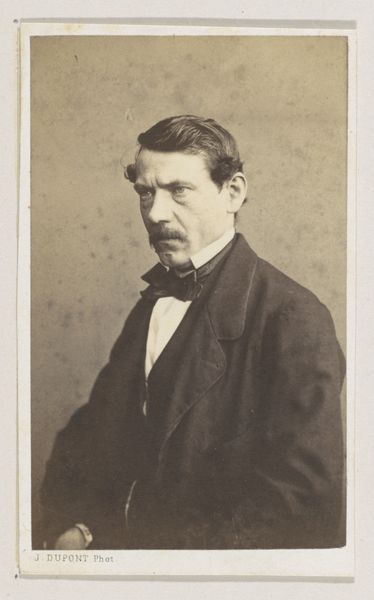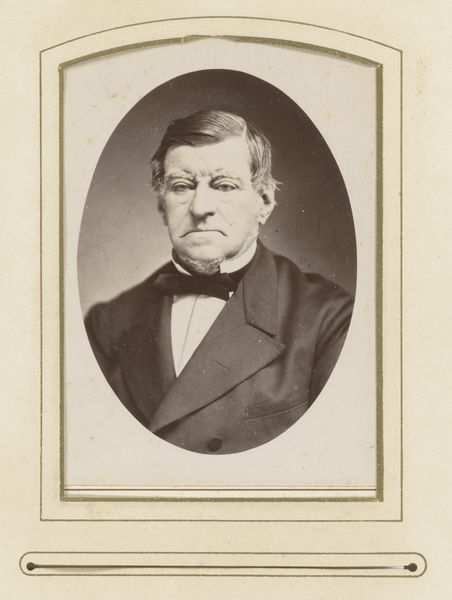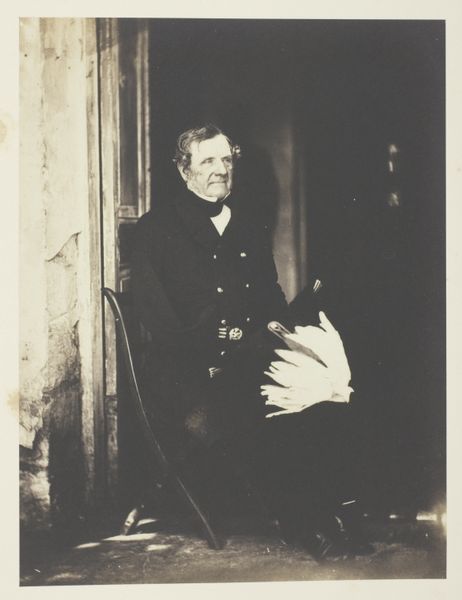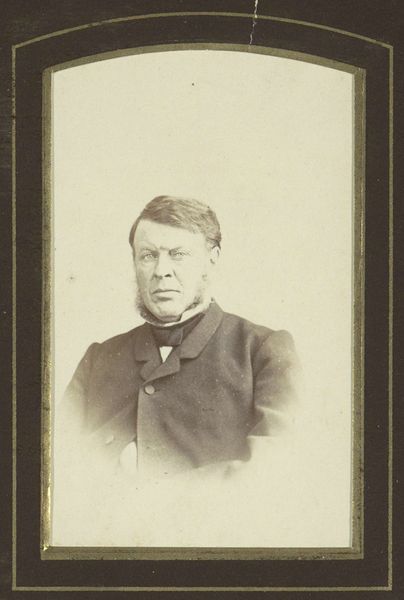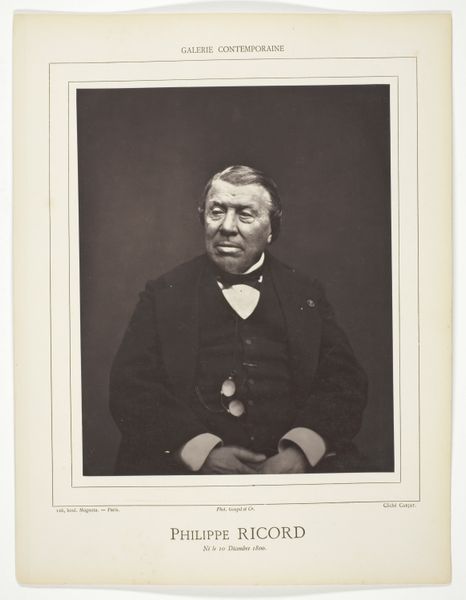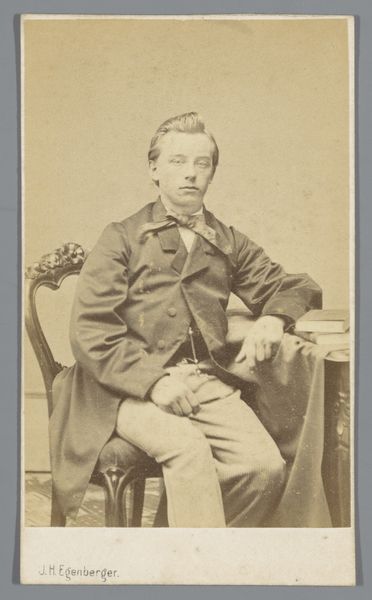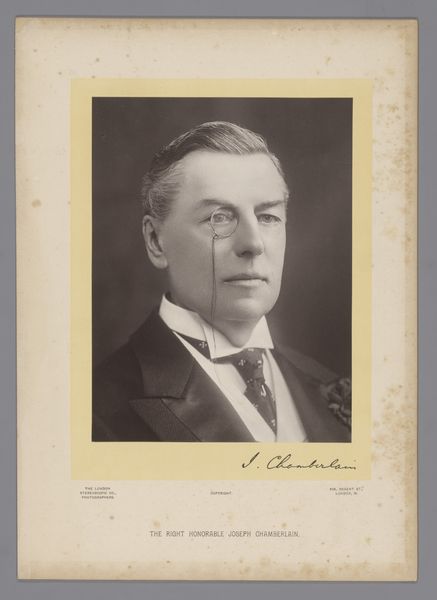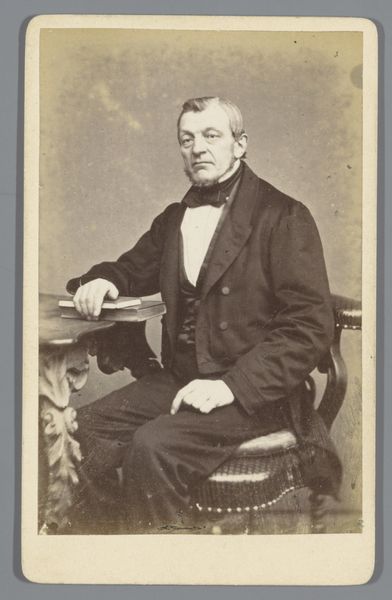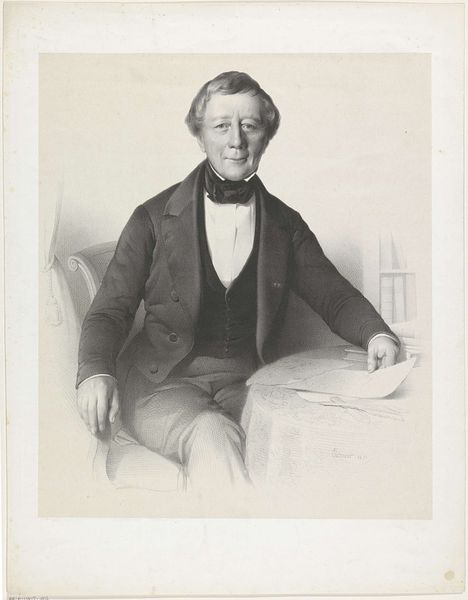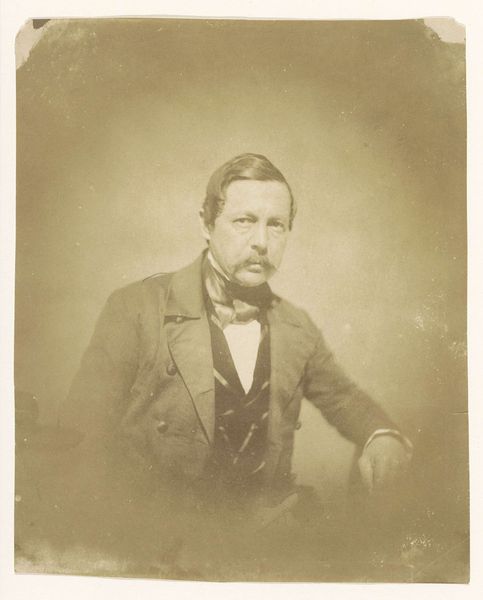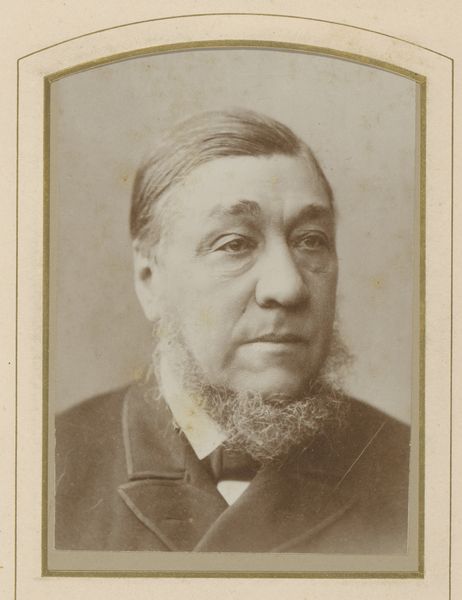
Dimensions: 18.9 x 15 cm (7 7/16 x 5 7/8 in. )
Copyright: Public Domain
This portrait of David D'Angers was made by Édouard Baldus, using the then-new technology of photography. Baldus was a master of the calotype process, an early photographic technique that used paper coated with silver iodide. Unlike the sharper, more detailed daguerreotypes, calotypes had a softer, more textured quality, with diffused light and shadows, as we can see here. This was because the paper fibers created a slight blur. The calotype was also a negative-positive process, which meant that multiple prints could be made from a single negative. This was a key advantage for commercial photography, as it allowed for mass production and distribution of images. In this way, Baldus contributed to the rise of photography as both an art form and an industry. Consider the labor involved: coating the paper, exposing the image, developing the print. These processes, though now automated, were once skilled crafts. By understanding the materials and making of this photograph, we can appreciate its historical and cultural significance.
Comments
No comments
Be the first to comment and join the conversation on the ultimate creative platform.
